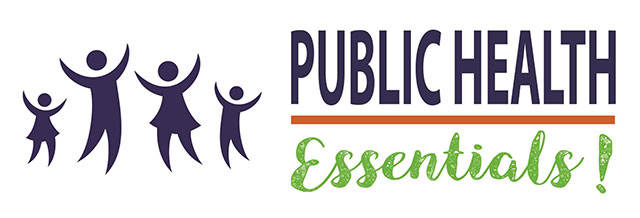By Kari Bray / Snohomish Health District
Many people have joined protests around the nation, including here in Snohomish County, following the death of George Floyd on May 25.
We have received questions related to the protests and COVID-19. In this blog, we want to address some of those.
What effect do protests have on case counts?
Disease can spread at public gatherings, but we do not expect to know what impact recent marches or rallies have on cases for a couple of weeks after the events.
There is an incubation period for the virus, which means if someone was exposed at an event, they would not develop symptoms right away. On average, it takes four to six days between exposure and onset of illness, but it can be as long as 14 days. Then it may be a day or two, possibly longer, before someone with symptoms is tested, and another one to three days before we get results, depending on where the test is done and how quickly results are reported to the Snohomish Health District.
So the case counts won’t immediately reflect exposures that may have happened in the last few days. We will continue to monitor the numbers, but likely won’t know more for at least another week, and potentially up to three weeks depending on when people are exposed, how long before they develop symptoms, and when they get tested.
How can protesters reduce the risk of exposure?
We encourage anyone who participates in protests to follow health guidelines as much as possible.
Some demonstrations have included people standing six feet apart and wearing face coverings while holding signs or banners. However, we know not every protest looks like that. Marches or rallies generally mean many people in close proximity. Here are some tips:
• Wear a cloth face cover.
• Have your own sign or banner rather than multiple people handling the same items.
• Wash hands frequently and bring hand sanitizer to use when soap and sinks are not available.
• Avoid touching your face. This includes avoiding fidgeting with your face cover.
• Avoid sharing food or drinks, particularly drinking from the same water bottle or container.
• Remember that risk of spreading illness increases when the crowd is larger, when people are more tightly packed, and when you are there for a long time. Consider how long you plan to be at a gathering and where you want to stand in that gathering.
Do people who attend a protest need to be tested for COVID-19?
People who have participated in a rally, march, or other large gathering should monitor their health afterward. They should consider pursuing testing, self-quarantining for 14 days, and avoiding contact with people who are more vulnerable to severe illness, including those who are older than 60 or who have underlying medical conditions. This helps reduce the risk of spreading the virus to others if they were exposed during a protest.
If they develop any symptoms, they should be tested right away. Symptoms of COVID-19 include:
• Fever or chills
• Cough
• Shortness of breath or difficulty breathing
• Fatigue
• Muscle or body aches
• Headache
• New loss of taste or smell
• Sore throat
• Congestion or runny nose
• Nausea or vomiting
• Diarrhea
A full list of symptoms is available from the CDC and may be updated.
What do we know about COVID-19 and its impacts on racial or ethnic groups?
Analysis of county case data earlier in this outbreak showed that COVID-19 has disproportionately impacted African American, American Indian/Alaska Native, Native Hawaiian or Pacific Islander, and Hispanic communities. Compared to the COVID-19 case rate for Caucasians and Asians, case rates were five times higher for African Americans and Latinos, three times higher for American Indian/Alaska Native people, and nine times higher for Native Hawaiian or Pacific Islanders. Despite the higher reported case rates, COVID-19-associated death rates are not higher for Latinos. The number of deaths in the other groups (2 each) are too low to calculate a meaningful rate.
We know that the health of individuals and of our community is impacted by social, economic and environmental factors. We must continue working for equity, diversity and inclusion in public health efforts.
What if I want to support anti-racism efforts but am not able to participate in protests?
There are many reasons someone may not join an in-person protest. This includes people who are older or who have underlying health conditions and are not participating in gatherings due to the higher risk of severe illness during this pandemic.
However, many who are not at the marches or rallies still want to take steps to address racism.
A number of resources are available, and a few are listed below. Take some time and look for other local or national resources on anti-racism efforts.
• Anti-Racism Resources shared by Leadership Snohomish County
• Anti-Racist Resources and Reading from Sno-Isle Libraries
• Being Antiracist: National Museum of African American History and Culture
• Learn about trauma and resilience
• NAACP Snohomish County Chapter
• Othering and Belonging Institute, University of California Berkeley
• Snohomish County Equity and Inclusion Task Force
The Public Health Essentials! blog highlights the work of the Snohomish Health District and shares health-related information and tips.
Talk to us
> Give us your news tips.
> Send us a letter to the editor.
> More Herald contact information.

























